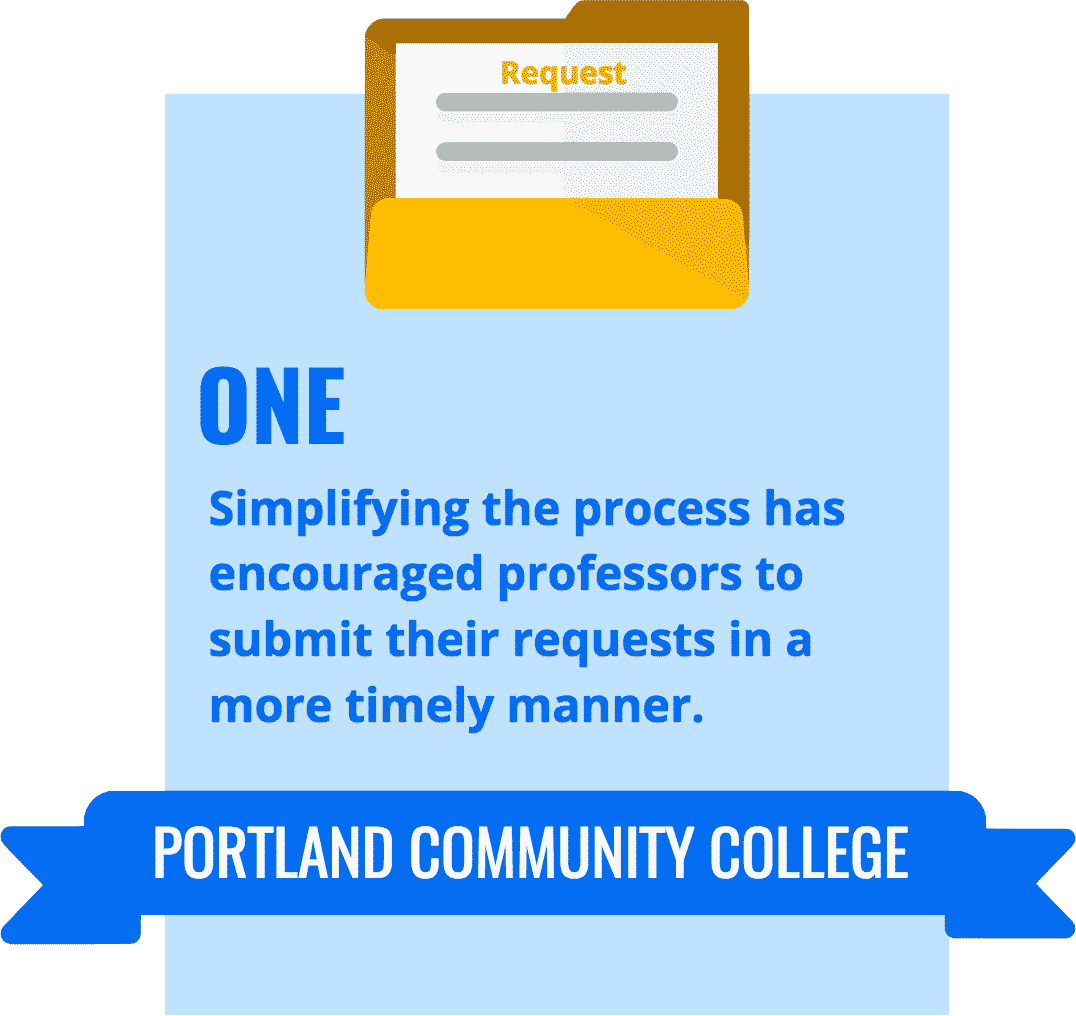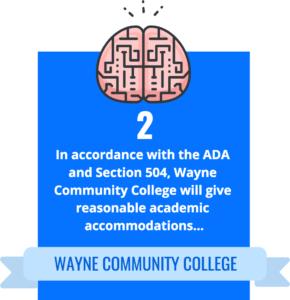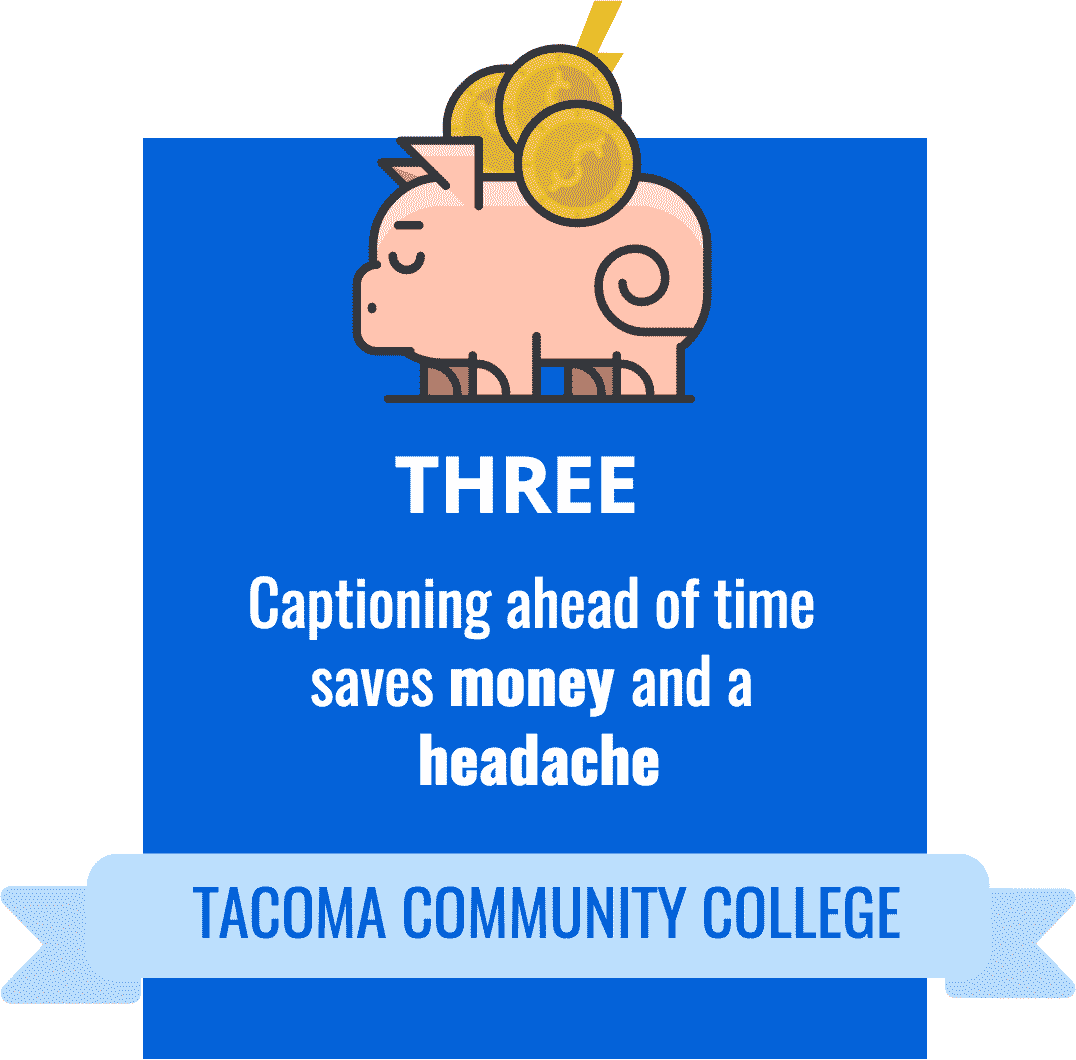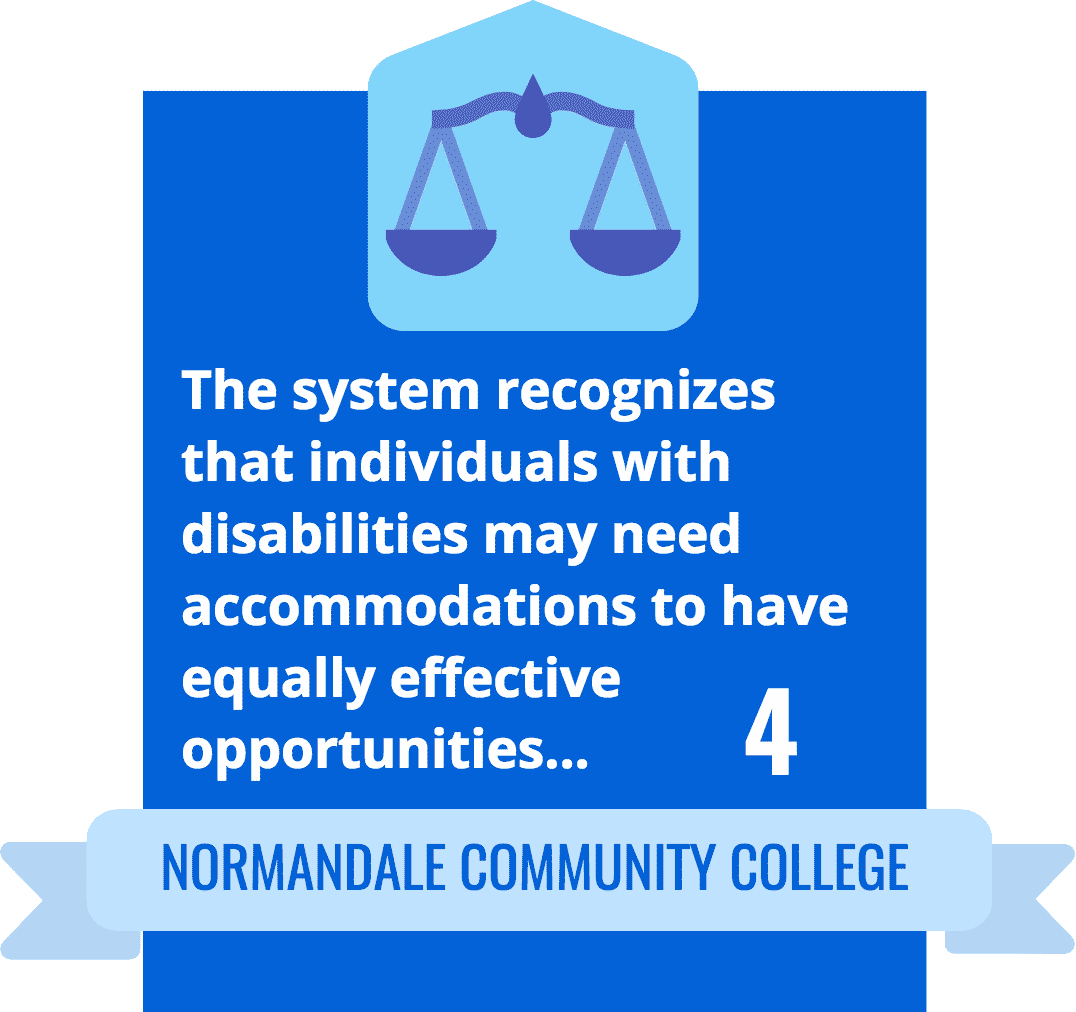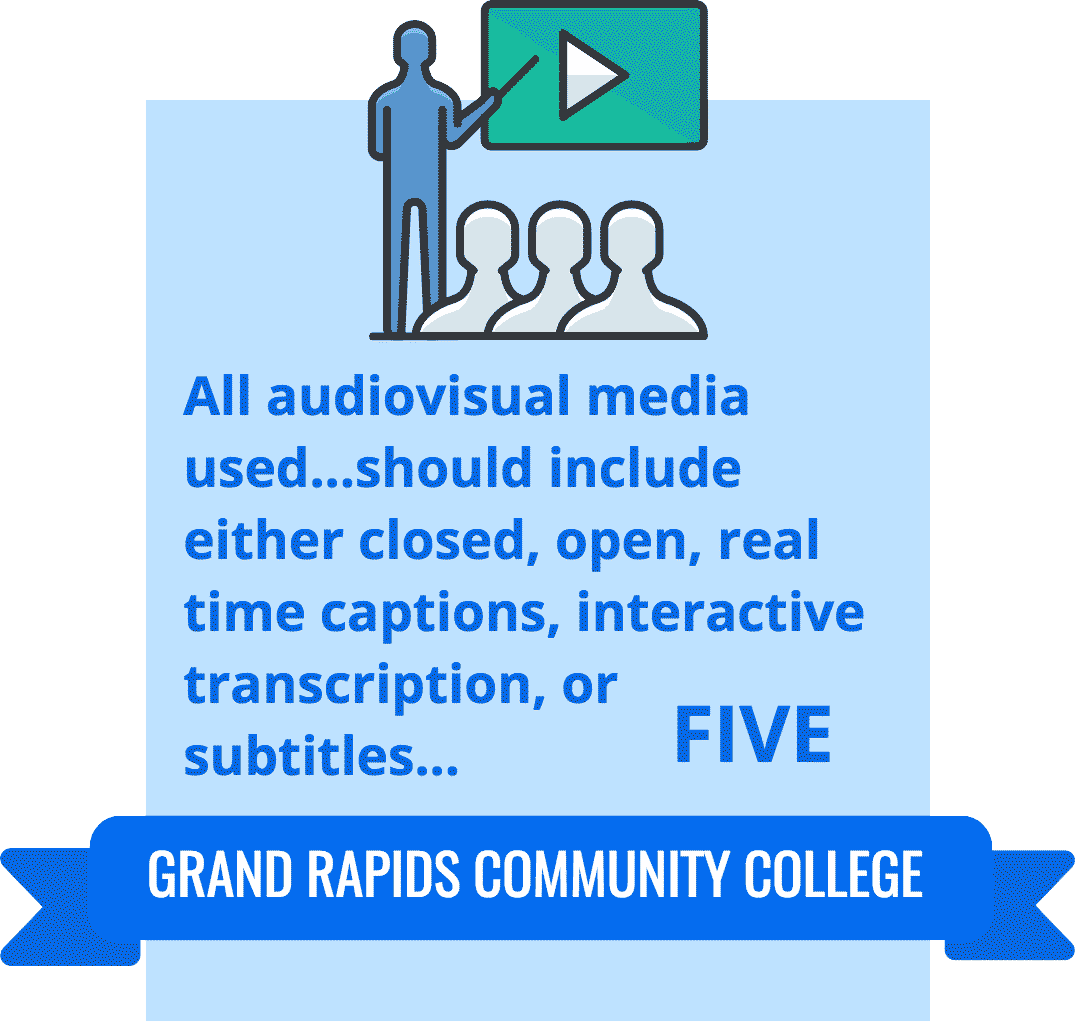5 Community Colleges Doing Captioning Right
Updated: February 7, 2024
Closed captions help students study more efficiently, watch videos in sound-sensitive environments, and are an accommodation for those who are deaf or hard of hearing. Bottom line – we know the benefits of captioning for college students are widespread.
If captioning and transcripts help all students alike, why is it that so many colleges are still not captioning their content? Although many of these schools would probably agree that captions are invaluable to students (and required by law) there are common barriers we hear over and over. One of the most common reasons for failing to caption is the cost of captioning, and the lack of budget. At community colleges, this burden is typically felt even more immensely.
Despite many community colleges struggling to find a captioning budget or successful workflow, there are several community colleges doing it right. Check out these five community colleges across the country that have figured out a way to put accessibility first.
1: Portland Community College
Portland Community College (PCC) has approximately 90,000 students across four campuses, and an online e-Campus. During the 2013-2014 school year, PCC had almost 1,500 students requesting accessibility accommodation. These requests included specific requests for captioning for 287 classes.
PCC is implementing a program to caption all video content available through their e-Campus. This will ensure that every course is made accessible. On the four physical campuses, video content is captioned by request.
Disability Services has worked to simplify the captioning process and make it easier for professors, as well as the small staff in charge of captioning. Simplifying the process has encouraged professors to submit their requests in a more timely fashion. Professors are asked to provide the video they plan to show at least 24 hours in advance of the class so. This will allow enough time to caption the content. Since the process working with 3Play Media to caption is so easy, professors have actually started asking for all of their content to be captioned.
2: Wayne Community College
The Disability Services webpage on the Wayne Community College website provides an abundance of information. They express their commitment to providing all students with equal access in their statement, reading: Consistent with the ADA and Section 504 of the Rehabilitation Act, Wayne
Community College is committed to seeing that students with disabilities have equal access to and participation in all programs of study. Students with documented disabilities will receive reasonable accommodations to ensure equal access to all programs and activities.
In addition to books in alternate formats and interpreter services, captioning is also available for students who are deaf or hard of hearing.
Wayne Community College’s goal is to “integrate students with disabilities into the college and to help them achieve equal opportunity and to be able to participate in and benefit from the programs and activities enjoyed by all students.”
3: Tacoma Community College
At Tacoma Community College (TCC) they’re setting an example to proactively caption video content. While they are aware of the legal requirements to caption, TCC’s main focus is to build a community where all students, faculty, and staff can benefit from more accessible video.
TCC has come up with a captioning workflow to simplify and streamline the process. First, a caption request is submitted either by a student or faculty member. The e-learning staff then receives and processes the request and sends it out to 3Play Media for transcription and captioning. Once the content is captioned, e-learning staff tracks the captioning process so they can stay on top of which classes and content have and haven’t been captioned.
Captioning Ahead of Time Saves Money (and a Headache)
Many colleges are hesitant to caption ahead of time. There is this idea that they don’t want to spend the money on content they might not really need to be captioned. However, as TCC learned, planning in advance can actually save money. Over a summer vacation, TCC captioned several courses that had a lot of video. Since it was summer there was no rush on this content, and they were able to utilize a discounted extended turnaround option which saved them a significant amount of money. When the school year started they received an accommodation request for this course and were happy to have it already for a bargain price.
Suggestions for Budgeting
TCC recommends asking for a budget of about $10,000 as a reasonable captioning budget to start off with. They recommend developing a workflow based on how the requests come in, and also stress the importance of measuring the efforts and demand for captioning. This will help to justify future budget requests.
4: Normandale Community College
Normandale Community College is another school putting captioning at the forefront. They provide access to programs, services and activities to individuals with disabilities based on the requirements of state and federal law. The Office for Students with Disabilities states: The Office for Students with Disabilities (OSD) provides access and inclusion to Normandale courses and activities by offering students accommodations, individualized educational support, and academic and referral information. Students who may qualify for services include those with learning disabilities, a vision or hearing loss, physical and mental health disabilities, traumatic brain injuries, autism spectrum and attention deficit disorders, and others.
Normandale offers a multimedia production service to faculty and staff. This facility provides the resources to develop original multimedia content for classes, student events and activities, staff training, or institutional presentations. Information can be found on the site regarding how to add captions to all materials created through this program, so that all material is made accessible to individuals who are deaf or hard of hearing.
5: Grand Rapids Community College
Grand Rapids Community College takes accessibility seriously. In fact, they have gone so far as to create an extensive accessibility policy. Among other things, the policy requires all video content be captioned. The policy states:
All audiovisual media used as part of classroom activities, instruction, distance learning, training modules for institution personnel, campus sponsored events, and co-curricular activities should include either closed, open, real time captions, interactive transcription, or subtitles; whichever is appropriate.
There are many reasons they list for putting this policy in place, including:
- Ensure compliance with federal law based on the Americans with Disabilities Act (ADA)
- Benefit individuals who are deaf or hard of hearing who need captioned audio content
- Support an inclusive environment geared towards universal design
- Accommodate individuals with learning disabilities, ADD/ADHD, etc.
- Assist individuals learning English as their second language by providing captions
- Help persons who see GRCC produced media productions.
- Benefit individuals for whom captioning helps in taking notes and improves comprehension and retention.
- Benefit audience members when there are variations of sound quality or environments.
Grand Rapids Community College provides a list of definitions and related resources in addition to their comprehensive policy. These documents contain information on things like copyright, distance learning education, and accommodation request forms.
While the cost of captioning – or even the mere thought of captioning – may seem overwhelming to a community college, many are finding ways to make it happen. These five schools are great examples of how finding the right process and workflow make captioning content doable, and even painless. If your first year budget is not as large as you would like, remember the tips here to keep records of the demand and utilize this information to gradually increase the ask. Finding the budget to caption today will undoubtedly be less costly than a potential lawsuit.
__
Get started today, and join these five community colleges in doing captioning right!
Further Reading

Subscribe to the Blog Digest
Sign up to receive our blog digest and other information on this topic. You can unsubscribe anytime.
By subscribing you agree to our privacy policy.




